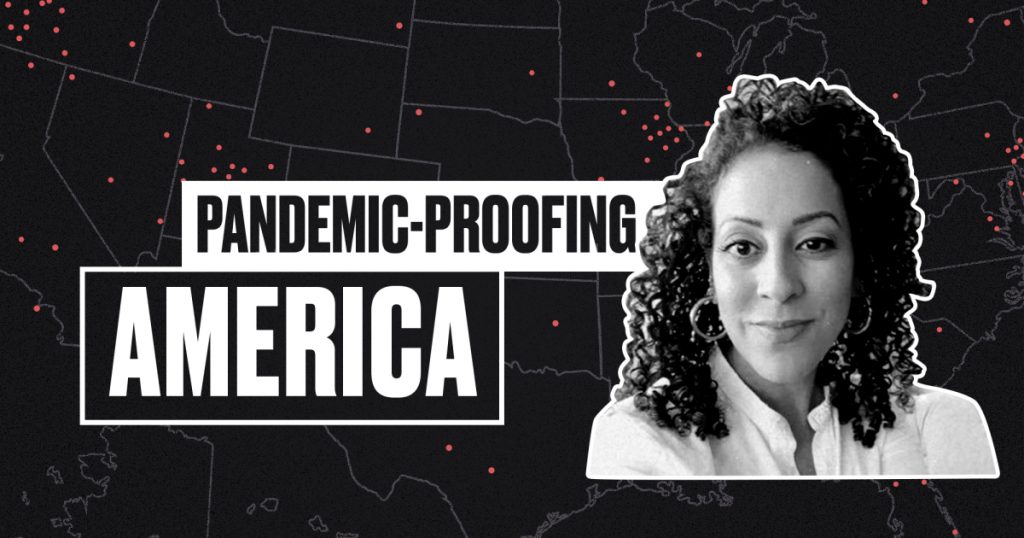The Biden Administration Must Beat Viral Misinformation Influencers at Their Own Game
Mother Jones illustration
Let our journalists help you make sense of the noise: Subscribe to the Mother Jones Daily newsletter and get a recap of news that matters.Jessica Malaty Rivera is a microbiologist and an infectious disease expert who specializes in explaining complex scientific concepts to the general public. Since the beginning of the pandemic, her particular mix of expertise has put her at the center of the conversation around coronavirus messaging. As the lead science communicator at the COVID Tracking Project, she works closely with data scientists and epidemiologists to present up-to-the-minute, comprehensive public health information on coronavirus trends in the United States. It’s the kind of thing, she says, that would ideally be done by the federal government—but the Trump administration has left Americans with few reliable resources to track the spread of the pandemic. In her spare time, Rivera runs an Instagram account where she explains COVID science to her 139,000 followers in friendly, fun-to-watch videos and stories. Recent posts have included advice on holiday gatherings, an explanation of the science behind flu shots, and a live mythbusting Q&A session where she answers her followers’ questions. Rivera talked with Mother Jones about how the Biden Administration can clean up the COVID messaging mess that the Trump administration made—and why the key to great science communication is empathy.
On what she wishes the government were telling us: We’ve been really missing some very specific direction on what we should do, and what we shouldn’t do. The recent messages that we just saw about Thanksgiving travel—we’ve been needing those kinds of very direct messages for the last nine months with everything from guidelines to what’s happening in the data. In the absence of very clear and transparent guidelines and reporting structures, we have to look elsewhere because it’s not there from the government.
From a science communication perspective, early in the pandemic, it was a really unfortunate situation where they [public health officials] were trying to essentially preempt bad behavior—panic buying and hoarding of essential PPE—that was causing shortages for people who really needed it. Then, when the message was flipped [to recommend wearing masks] there was a ton of misinformation a ton of broken trust. Looking back, it shouldn’t have been as binary. It shouldn’t have been, “Please don’t, absolutely not.” It should have been, “Let’s use masks, let’s be reasonable here about what you should be buying, keep N95s exclusive to hospital staff and frontline workers.”
On how the Biden administration should improve the COVID communication strategy: States should not be left to themselves to be making these very important decisions. If we have federal government aligning with all 50 governors, and then the governors aligning with their mayors and all the cities, it’s going to make it less fragmented. So much of what we’re dealing with is a deluge of information that is really difficult to parse. The Biden administration needs to sit down with every single governor and say, “What do you need, looking at the data in your states? How can we make sure that each county each town, is not experiencing and believing and communicating things differently?”
Tools like public service announcements and emergency text message alerts are absolutely available to government. But we’re dealing with a hyper-politicized pandemic right now. The consequence of that politicization is that agencies like the CDC have been limited in their ability to do such things. I’m hoping that will change as we see a shift in the administration, that they will utilize all these tools of mass communication.
On how the government needs to level up on social media: The government is missing a huge opportunity in not using social media as a means to get people aligned on COVID messaging. It shouldn’t have to be people taking screenshots from articles and sharing pieces of information. It should be coming from government sources. The CDC has an Instagram account, and they have a Twitter account, but they’re not maximizing the opportunities. The flip side of that is that there are also a lot of people who are making a lot of noise, a lot of armchair epidemiologists who seize this opportunity as a means to grow their platforms and spread misinformation.
On the kinds of questions she gets on Instagram: Science communication without empathy is really meaningless. I tell my followers that there’s no such thing as a dumb question. I get questions as simple as what is DNA? And what is RNA? I love those questions! Those things come really naturally to me because I’ve spent my entire career in it. How do we understand a press release with data readouts from a clinical trial? And what does it mean when these drugs are paused in trials or these vaccines have these kinds of results? It’s stuff that was very insular in the science community, but now is on public display because of preprints and press releases and articles that are buzzing all day about this.
On what Biden’s vaccine messaging plan should look like: I’ve said from the very beginning that the only thing that should be leading a vaccine approval is the data and the science. It’s not politics, it’s not world views, it’s not anything except for that. There’s been a lot of misinformation about the process. A lot of people deny the fact that the US regulatory system is probably one of the most robust in the world. And what we’ve done with these expedited timelines is not cut corners on safety and efficacy. If anything, this should be the biggest example of when a lot of people cooperate and work together to remove the bureaucracy and the red tape and plow through it. We didn’t start from scratch. We had a number of running starts between a lot of research we did for SARS and MERS. Because of that, we can communicate that this was a robust, well thought out, and fully committed, vaccine clinical pipeline. I think a lot of people right now are confused about why it usually takes so much longer. And I think being clear on how we avoided that is how we can correct that confusion.
There has to be room for acknowledging the extremely rare occurrence of vaccine injury. To deny it is not actually being true to the science. I think that we need to be calculating how we speak about such things, because we’re talking about probability and incidents being extremely, extremely rare. But we also must recognize the fact that you’re probably going to have more success talking to somebody who is hesitant—somebody who is earnest and wants to actually make informed choices but feels overwhelmed by the information available to them—versus somebody who is hell bent on trying to create a narrative that is counter to the science and the data available.
On her work at the COVID Tracking Project: The COVID tracking project is a volunteer organization that is housed at the Atlantic. We are a team of data journalists, epidemiologists, and experts in a variety of spaces. We collect data every day from states directly and make it publicly available. In the absence of federal standards on reporting, and even federal databases, we provide that every single day. We get about two million hits to our API each day.
We put out a recommendation list of what we would hope to see in some data dashboards in the upcoming administration. It’s because we’ve spent the last nine months seeing all of the challenges and developing best practices for getting as comprehensive a picture of data as we have access to. With no federal data standards, that makes the job really difficult. So this is our call to action—our request is that we have a more streamlined approach to data standards, so that it isn’t as patchwork when we’re trying to make sense of all of the trends that we’re seeing in all the jurisdictions that we track.





